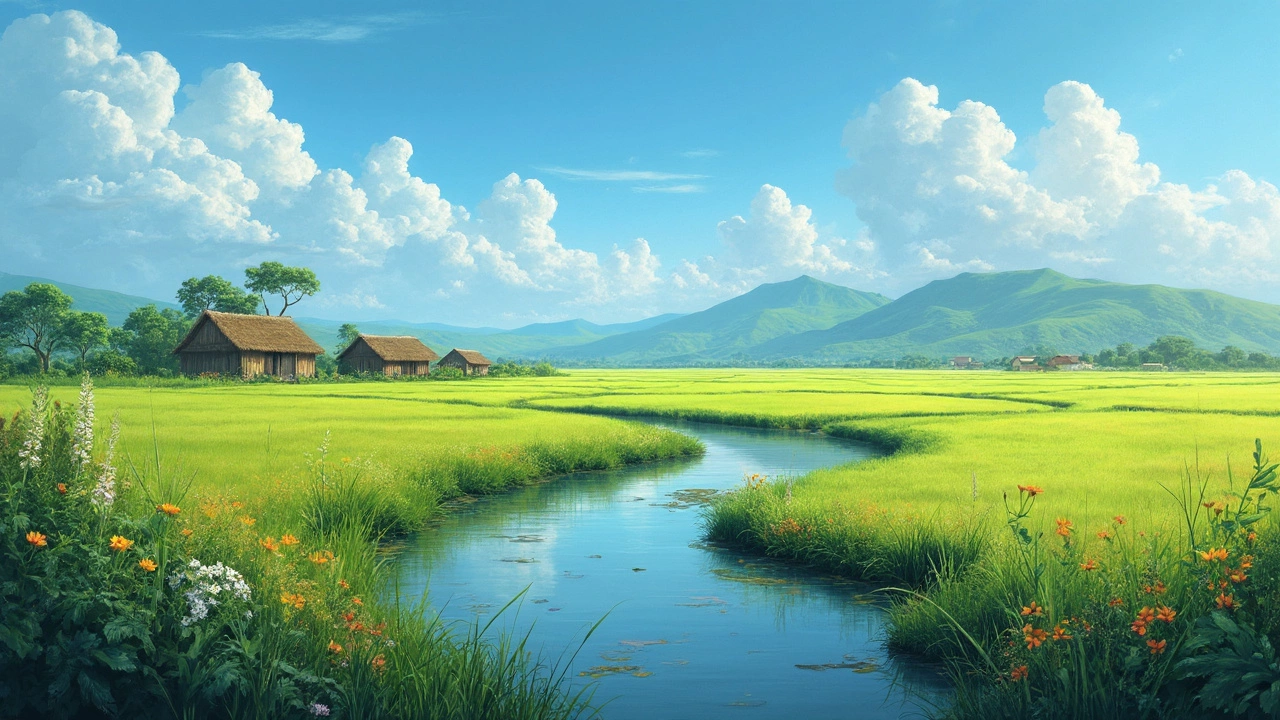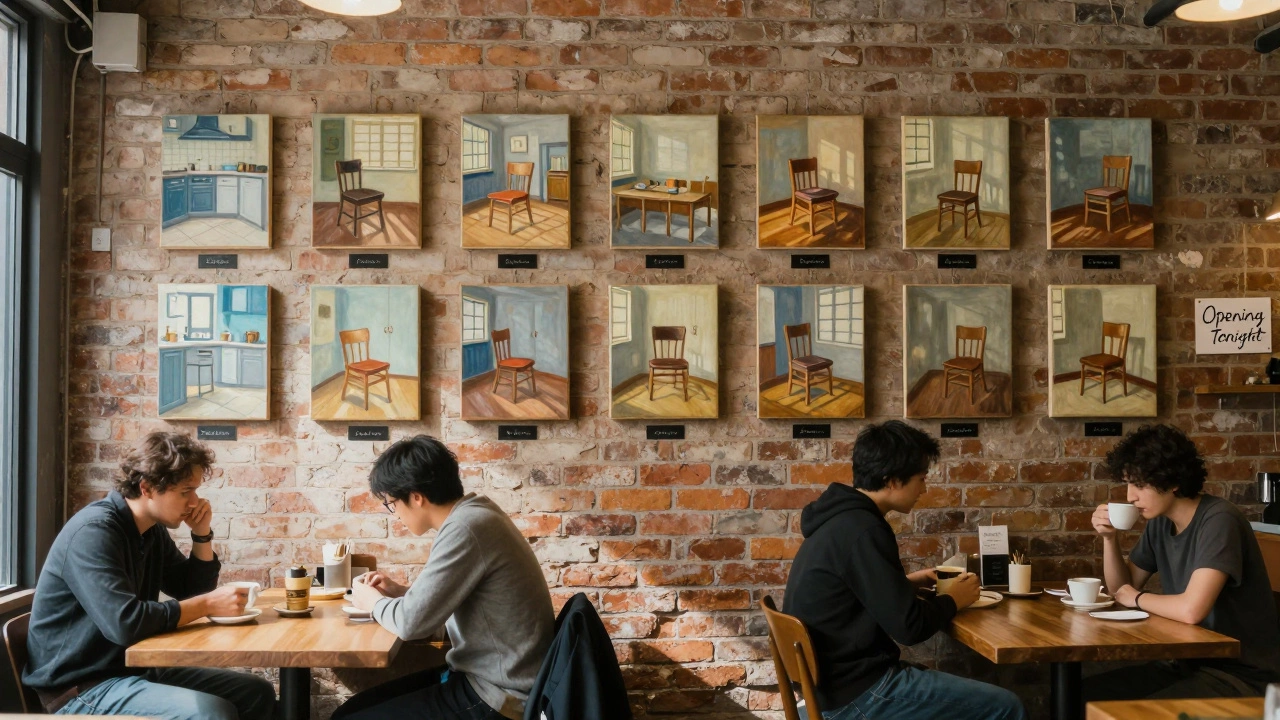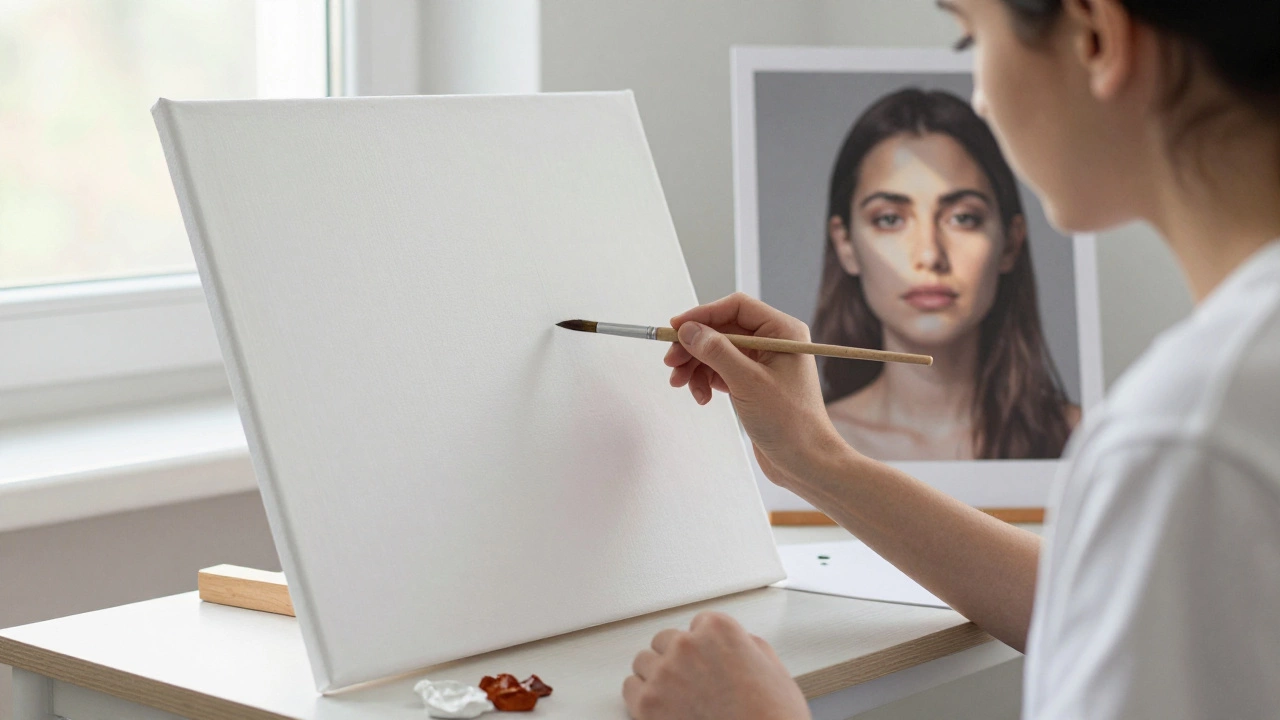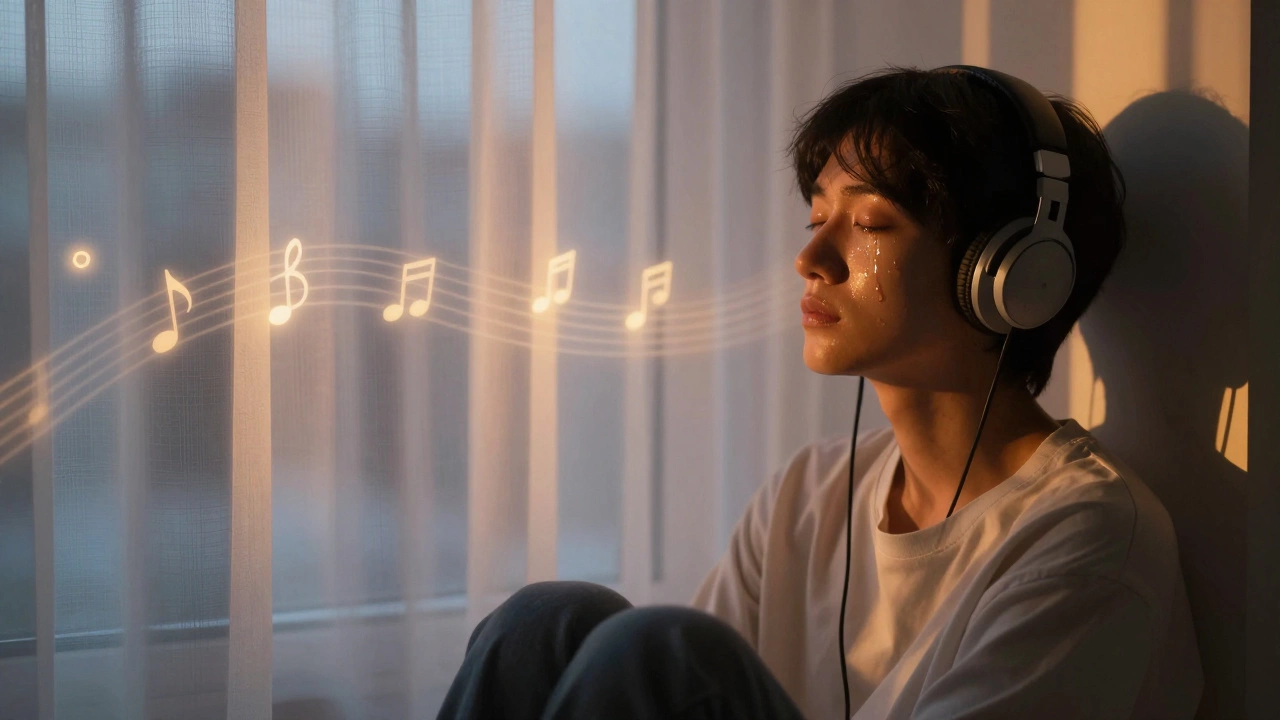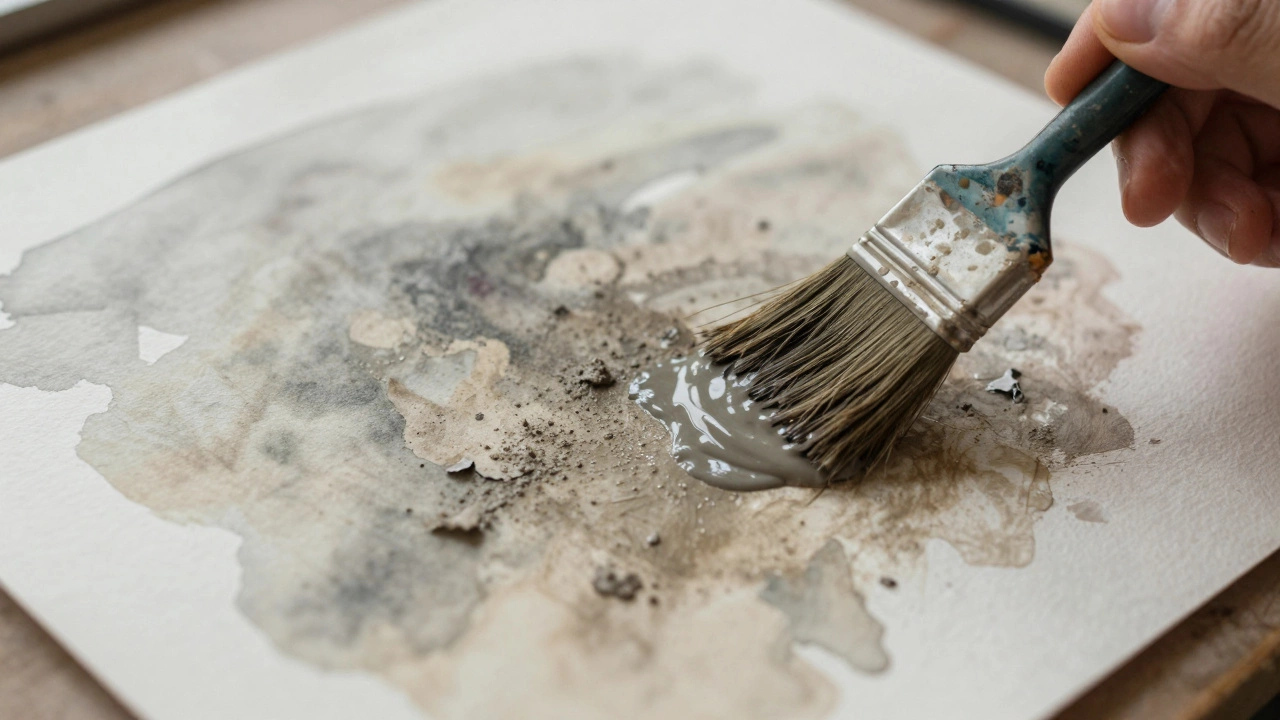Have you ever stood before a landscape painting and felt transported right to that place, or perhaps seen colors and lines that evoke a mood more than a specific location? That’s the magic of different types of landscape paintings—each has its own way of capturing nature’s essence.
First up, we have representational landscapes. Think of these as the realists of the art world. They aim to depict what the eye sees as accurately as possible. Picture the stunning detail of a mountain range or the delicate play of light in a forest. It's almost like looking through a window into another world.
- Introduction to Landscape Painting
- Representational Style
- Impressionistic Landscapes
- Abstract Approaches
- Tips for Budding Artists
Introduction to Landscape Painting
Landscape painting has been a beloved art form for centuries, capturing the beauty of the natural world in ways that photographs sometimes can't. These paintings aren't just art; they're windows into the diverse environments that inspire us—whether it's a serene countryside, a bustling cityscape, or the tranquil ocean.
Landscape painting gained real traction during the Renaissance but became increasingly popular during the 17th century, especially in Europe. Artists like Claude Lorrain and Nicolas Poussin started a trend in making nature the focal point, rather than just a backdrop for narrative scenes.
The 19th century saw the rise of realism with artists like John Constable who sparked interest in detailed, accurate depictions of nature. This period was significant as it made landscape painting a genre of its own, appreciating landscape paintings not just for the visual appeal but for the personal and emotional connections they evoke.
Throughout the years, landscape painting has branched into various styles, each with its unique approach to portraying nature. This article will walk you through these styles, helping you understand the differences and what makes each unique. Whether you're a budding artist wanting to hone your craft or just an art lover eager to know more, there's plenty to explore.
Representational Style
Okay, so let's talk about representational landscape paintings. If you've ever marveled at a painting that genuinely looks like a photograph, you're already familiar with this style! Representational paintings strive for realism. They focus on capturing an environment in all its natural glory. Artists who embrace this style put a lot of effort into depicting the scene as life-like as possible, making you feel as if you're looking at the real thing in nature.
The roots of this style can be traced back to the Renaissance period. During this time, painters started using techniques like perspective and shading to add depth and realism. Think about works by artists like Claude Lorrain or even the landscapes in works of Renaissance masters like Leonardo da Vinci. They worked meticulously to ensure each tree, cloud, and hill was true to life.
Nowadays, artists still play with representational styles, adding various techniques to mimic real-world qualities like light and shadow or texture. It's almost scientific the way they play with details.
For someone looking to dive into this style, there's a ton of focus on accuracy. Your toolkit is crucial—high-quality brushes for fine details, and paints that can handle subtle gradations. And make sure to practice your observation skills. The key is seeing and representing the tiny things that make a scene come alive.
One useful tip is to start by painting from photographs. Others sketch outdoors first to capture light and colors directly before taking their work indoors. Here’s a fun fact: Artists who focus on representational landscape paintings often prefer early mornings or late afternoons, named the "golden hours," for the best natural light.
| Artist | Famous Work | Region |
|---|---|---|
| Claude Lorrain | Landscape with the Marriage of Isaac and Rebekah | France |
| Leonardo da Vinci | Background landscapes in the Mona Lisa | Italy |
So, whether you're just appreciating or planning to create, understanding the depth and detail of representational landscapes can elevate how you see the world—and how you portray it on canvas!
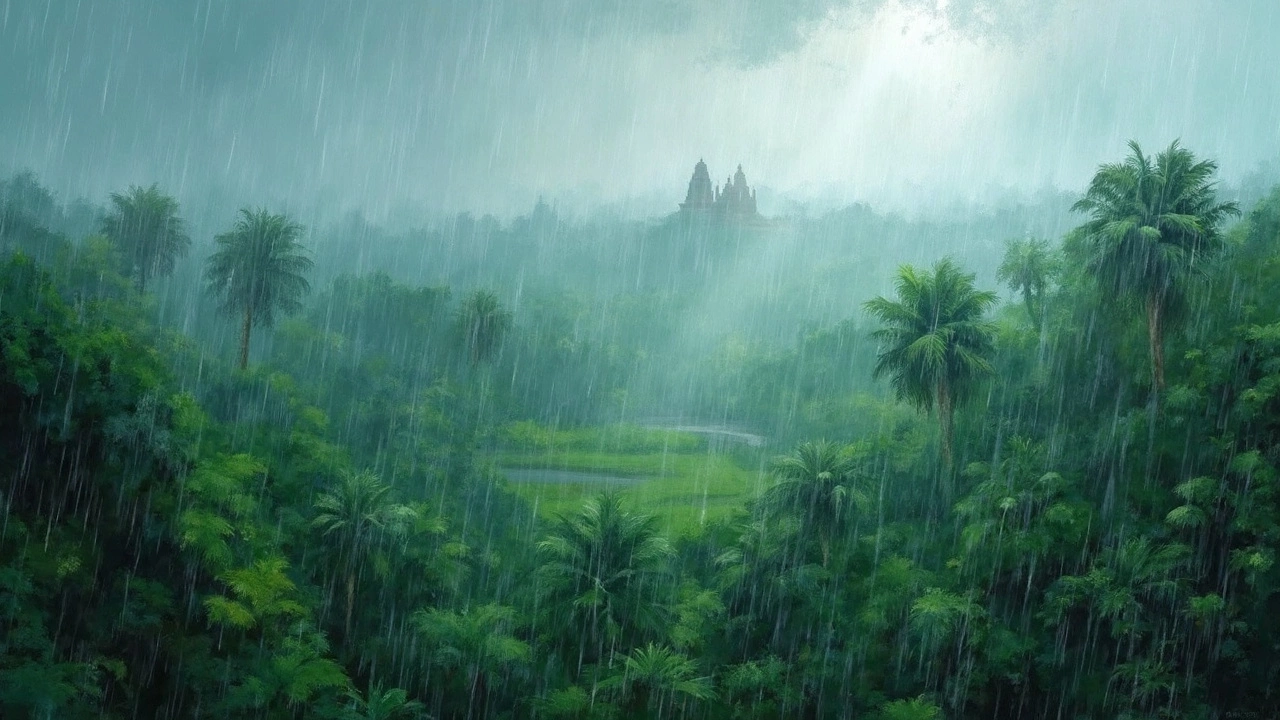
Impressionistic Landscapes
Impressionistic landscapes are like a breath of fresh air. They're all about capturing the feel or impression of a scene rather than getting caught up in details. Think of these paintings as a snapshot of a fleeting moment, with a focus on light and color. It's a style that emerged in the late 19th century and shook up the art world by challenging traditional norms.
The Impressionists were big fans of painting outdoors, or 'plein air,' as they called it (a fancy way of saying 'open air'). This approach allowed them to observe how light and weather changed a scene throughout the day. It's a bit like trying to catch a cloud, constantly moving and shifting.
The brushwork is often loose and spontaneous, making everything look a bit like it's in motion. You won't find meticulous detail here—instead, there's an emphasis on how colors work together to convey the essence of the landscape. Claude Monet, one of the leaders of this movement, once said, "
I wish to paint the air in which the bridge, the house, and the boat are to be found—the beauty of the light in which they exist."It's all about mood and atmosphere rather than hard lines.
This approach to landscape paintings celebrates natural beauty in its purest form. Artists use colors side by side, letting the viewer's eye do the mixing. So, from a distance, it blends beautifully, but up close, it's a riot of colors—a bit of a messy masterpiece!
Whether you're an art lover or looking to channel your inner artist, understanding this style can change how you see the world. Instead of focusing on every tiny detail, try to see the bigger picture, how everything comes together to make that moment magical.
Abstract Approaches
Diving into the world of abstract landscape paintings, you’re in for a treat that's all about breaking away from realistic details. Abstract landscapes are like the rebels of the art world, where artists express not just the scene but their feelings and emotions tied to it. You won’t always recognize specific mountains or trees here; instead, the nature of the landscape is captured through shapes, colors, and forms.
This style is all about freedom. Artists play with color palettes that might stray from the natural greens and blues. For example, a fiery red sky or a river made up of bold geometric patterns. It's the artist’s perception of a place, bringing a new vibe to how we view landscapes, and it often makes you feel something, even if you can't put your finger on it.
Famous artists like Wassily Kandinsky pushed the boundaries of abstraction by focusing on the emotional trigger rather than literal representation. His works often explore the relationship between color and sound, inviting viewers to 'hear' the painting in front of them.
If you're eager to try your hand at abstract landscape painting, start by thinking about the emotion or sensation you want to convey. Is it a turbulent storm? Use swirling, aggressive brush strokes. A calm, sunny day? Consider soft, sweeping lines with pastel hues. Let your imagination guide your brush, and remember, there are no mistakes, only happy accidents.
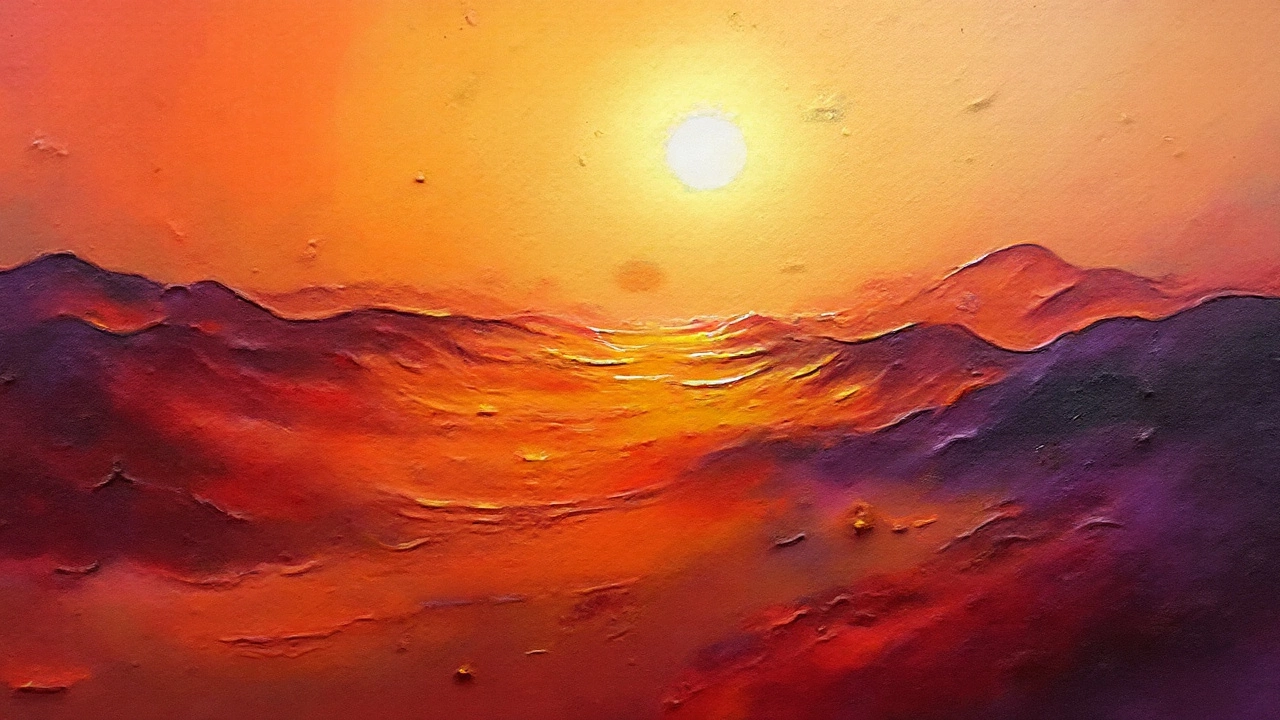
Tips for Budding Artists
If you're about to dip your toes into the world of landscape paintings, welcome aboard! It might seem a bit daunting at first, but, honestly, learning the ropes can be part of the fun. Let's break it down with a few tips that might just become your roadmap.
First things first, spend time observing nature. You're bound to find inspiration in everyday moments—whether it's a sunset from your backyard or a nearby park. Having a sketchbook to quickly jot down ideas or scenes can be incredibly handy. You’d be surprised at what a simple stroll can do for your creativity.
When it comes to choosing your style, don't be afraid to experiment with what you enjoy. Maybe you're drawn to the precise details of representational art, or perhaps the loose strokes of impressionistic paintings are calling your name. Each approach offers its own unique challenge and reward.
Start by playing with colors and techniques. Nature isn’t just a sea of green. Try mixing unexpected colors to achieve vibrancy or mood. Using a variety of brush sizes and techniques can also add depth and texture to your work.
- Representational Style: Focus on accuracy. Play with different brush techniques to capture light and shadow.
- Impressionistic Landscapes: Use loose brushwork. Let your brush do the talking, and focus on color and movement.
- Abstract Approaches: Forget the rules. Think shapes, colors, and emotions rather than the actual scene.
Don’t get too caught up in getting everything perfect on your first try. Many artists evolve their style over the years and continuous practice is key. Consider participating in local art groups or online forums to get feedback—it can be incredibly helpful to see what others think.
Lastly, remember to enjoy the process. Art isn’t always about the final product but the journey. So pick up that brush and see where it takes you!
